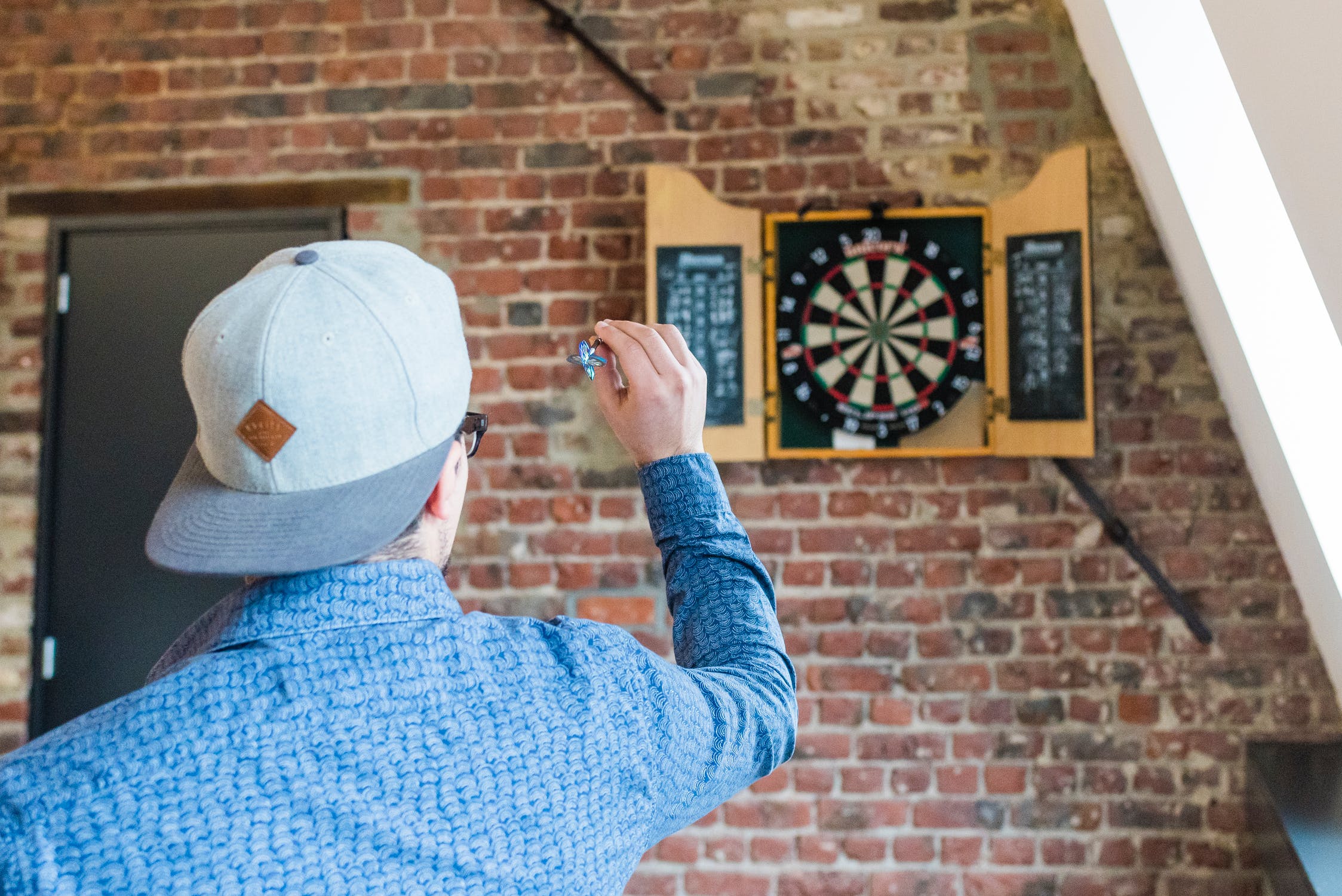If you are considering buying your first dartboard, getting back into the game after a long spell or just want to know more about the game of darts you have come to the right place. Here we are going to explain the basic darts accessories and equipment beginners need to be able to play and enjoy this wonderful sport. So, whether you want to install a dart board in your new garden den or spare room or want something to play when you join friends at the pub, getting the right kit means you can give yourself the best chance of success.
Choosing your darts
If you are starting your darts journey by browsing a darts accessories store online you will probably be overwhelmed at the amount of choice. Darts, in many fantastic colours and designs, often including top player ranges, will assault the eyes and have you wondering where to start. If you’re new to darts then here are some simple steps to follow when choosing a set of darts:
Weight – darts come in a number of different weights to suit different throwing styles. When starting out, it’s best to choose a middle weight of dart so you have scope for moving in either direction. Look for darts with a weight of around 22g – 24g as a starting point and then if you do decide to change, only move by a gram or two in either direction, as you’ll be surprised at how much difference this subtle weight change can make.
Shape – darts also come in different shapes, particularly in the barrel, so it’s helpful to choose a style that will suit your grip. If you naturally grip a dart with your thumb and two fingers closely together, choose a shorter, thicker barrel and if you hold it close to the front of the dart choose a forward weighted style. If, on the other hand, you hold a dart quite lightly, choose a dart that has a narrow barrel. For wider hands, choose a wider barrel and if you are struggling to get your grip in a consistent place, choose darts with a grooved barrel so you know where to place your fingers.
Tips – when buying darts, be mindful of the fact most come in steel tip and soft tip versions. Steel tip darts are the traditional kind, made to be used on a bristle board. Soft tip darts have a flexible tip made out of plastic and are designed to be used on plastic or electronic dartboards.
Stems – darts stems come in a variety of lengths, so you can experiment to find the right one that suits your throw. You can choose from short, medium and long barrels or short, intermediate and medium barrels. Opt for middle lengths if you are a beginner as this style will help you achieve a good stability when throwing. Also remember that stems can be made from different materials – including plastic, aluminium, nylon and carbon fibre – and depending on which material you choose, the dart may be lighter or heavier overall, and could be more or less prone to damage.
Flights – shopping for dart flights can be mesmerising, as your eyes are drawn to a range of colourful, different shaped flights and it’s hard to choose! If you’re new to darts, stick to a standard shaped flight, until you are more comfortable and familiar with your throwing style, then you can experiment with different shapes such as kite and pear.
Choosing your dartboard
If you’re going to be practising your throwing at home you’ll need a dartboard and a place to hang it. Remember to choose a dartboard suitable for the type of darts you are planning on buying – for example bristle board for steel tip darts and plastic board for soft tip darts. When choosing a dartboard, think about how much space you have and whether you’ll want to mount the board in a darts cabinet so you can close the doors on it and also have a place to chalk up your scores. If you don’t have space for a cabinet or don’t want the distraction of something around the board, choose a dartboard surround to help protect the wall around the board from stray darts.
Darts accessories
There are a huge range of darts accessories available, but just because they exist doesn’t mean you’ll need to buy them all from day one. Instead, think about how and where you will be playing so you can decide on the most appropriate accessories, for example:
Darts cases – a must have if you want to keep your darts, spare flights and shafts safe. If you’re going to be traveling to and from matches, opt for a harder case with more protection for your darts equipment during transit.
Flight protectors – these are a nifty little invention that can help prevent your flights from falling out. Remember also to keep some spare flights handy in case yours get damaged.
Wax and chalk – to help you get a better grip on your darts.
Mats – to help protect your floor and to mark out the throw line.
Scorers – perfect if your maths isn’t up to scratch and you want an easier way to keep track of the scores.
And finally, as you step up to the oche, put your dominant foot forward and keep your body aligned with your dart and the target. Lean your weight slightly forward but make sure you don’t step over the line. Try not to grip your darts too hard as you might experience cramping in your fingers after a while; just do what feels comfortable to you and experiment with your positioning and throwing technique until you find something that works for you.
For more advice and information on playing darts or to shop for darts accessories you can search for Double Top Darts.
